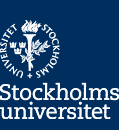Abstract: "Dating of and Tracing the Uralic languages through comparative linguistics, statistics, sound change laws and molecular genetics"
The thesis pertains to language history of Finnish and its relationship to other Uralic languages. It aims to study, examine and conclude a more detailed language tree model for the Uralic languages and the exact relationship of Finnish to the other Fennic languages as well as to its more distant relatives. More specifically, by employing mainly lexicostatistical comparisons in combination with sound change laws, the processes through which ”newer” Fennic languages, such as Meänkieli, Kainu, Kven and Võro-Seto emerged are determined and dated. The dating study proceeds through increased time depths into the Fennic (ex: Karelian), Finno-Mordvinic (ex: Moksha), Finno-Volgaic (ex: Mari), Finno-Permic (ex: Komi-Zyrian), Finno-Ugric (ex: Hungarian) and Uralic (ex: Nenets) eras.
Further, new Uralic etymological research will be presented binding Finnish (and Finnic) more securely to Proto-Uralic, with new reconstructed Proto-Uralic vocabulary.
Furthermore, genetics studies are independently employed in finding and tracing ancient tribal contacts between Uralic and non-Uralic speaking tribes, giving additional insight in the Finnish language history, and also strengthening the dating results. Other tentative genetic language relationships are also studied and commented upon. In summary, all this has given a more detailed Uralic language development model at least for certain groups of languages, and more specifically for Finnish, tracing it back thousands of years.








